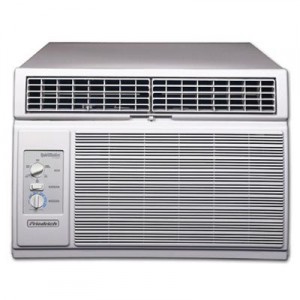In a central air conditioning unit, there are two basic units. The first unit is the condenser, and the second unit is the evaporator. Generally, the condenser is located outside. The evaporator is located inside the duct or the plenum. Normally, the evaporator is located above the furnace.
Generally, a house’s air conditioning unit is attached to the house’s air system. Therefore, an air conditioning system uses the same blower, ductwork, and motor as the heating unit. However, the system is used to distribute cold air to the house. When a central air conditioning unit is in operation, warm air from inside of the house is directed to the furnace through a duct. Then, warm air is moved across the evaporator coil by way of the blower. After this action has been performed, cool air enters the house. If an air conditioner is making normal operational noises but the house is not being cooled, the problem usually lies with the distribution center.

First, we will take a look at the steps involved in cleaning the evaporator. The evaporator is generally located near the furnace. If the evaporator is easy to get to, it should be cleaned once a year. Do not attempt to clean an evaporator that is sealed inside of sheet metal. However, if the plenum is wrapped with foil, it is safe to clean. The first step to clean the evaporator is to remove the insulation. Next, remove the access plate. Generally, this plate is held in place by a few screws, removing them will allow you to remove the plate. Next, you must clean underneath the evaporator with a stiff brush, such as a toothbrush. You may be able to see what you are doing better if you have a small mirror. It is safe to slide the evaporator out slightly. However, you should make sure that you do not bend the evaporator pipes after sliding it out. Next, clean the tray underneath the evaporator. This tray allows condensation to be carried away from the evaporator. Pour a small amount of bleach into the tray’s weep hole. This will help to prevent the accumulation of fungus. Next, put the condenser back into its place and reinstall the plate. Now, you should check for air leaks by turning on the air condition. If there are any leaks, they can be sealed with duct tape.
Now, we will look at maintaining the air conditioning unit’s condenser. The condenser is generally located outside, and is likely to get dirty. Pay special attention to which way the fan turns before taking the unit apart. You must clean the coil on the side that the air is taken in. Before cleaning your condenser, you should remove any weeds, vines, or grass that may have grown around the condenser. These plants can inhibit the flow of air. Next, you should clean the condenser unit with coil cleaner. Coil cleaner is available from most hardware stores. Next, you should clean the fins with a toothbrush. Do not clean the fins with a water hose. The fins are made of very thin aluminum, and proper caution should be observed while cleaning them. Next, you should ensure that the concrete pad is straight. Using a carpenter’s level can help you ensure that the slab is level.
Commercial condenser unit covers can be purchased at most refrigeration stores. A condenser cover will help your unit stay free of debris, such as leaves and ice, during the fall and winter months.
Following these simple steps will ensure that your air conditioning unit runs for years to come.
Related Posts
- Whole House Fans
- How To Repair A Refrigerator?
- How To Install Central Air Conditioning?
- How To Fix an Air Conditioner?



